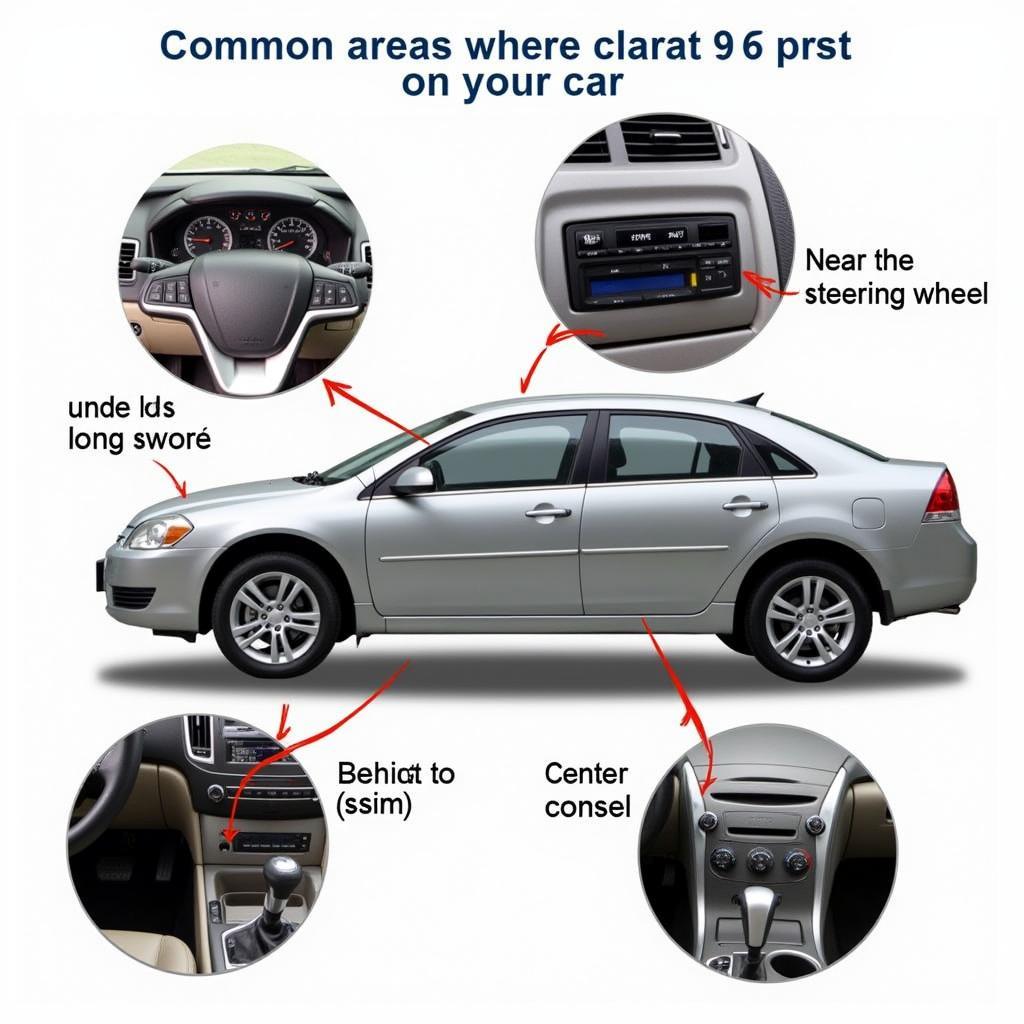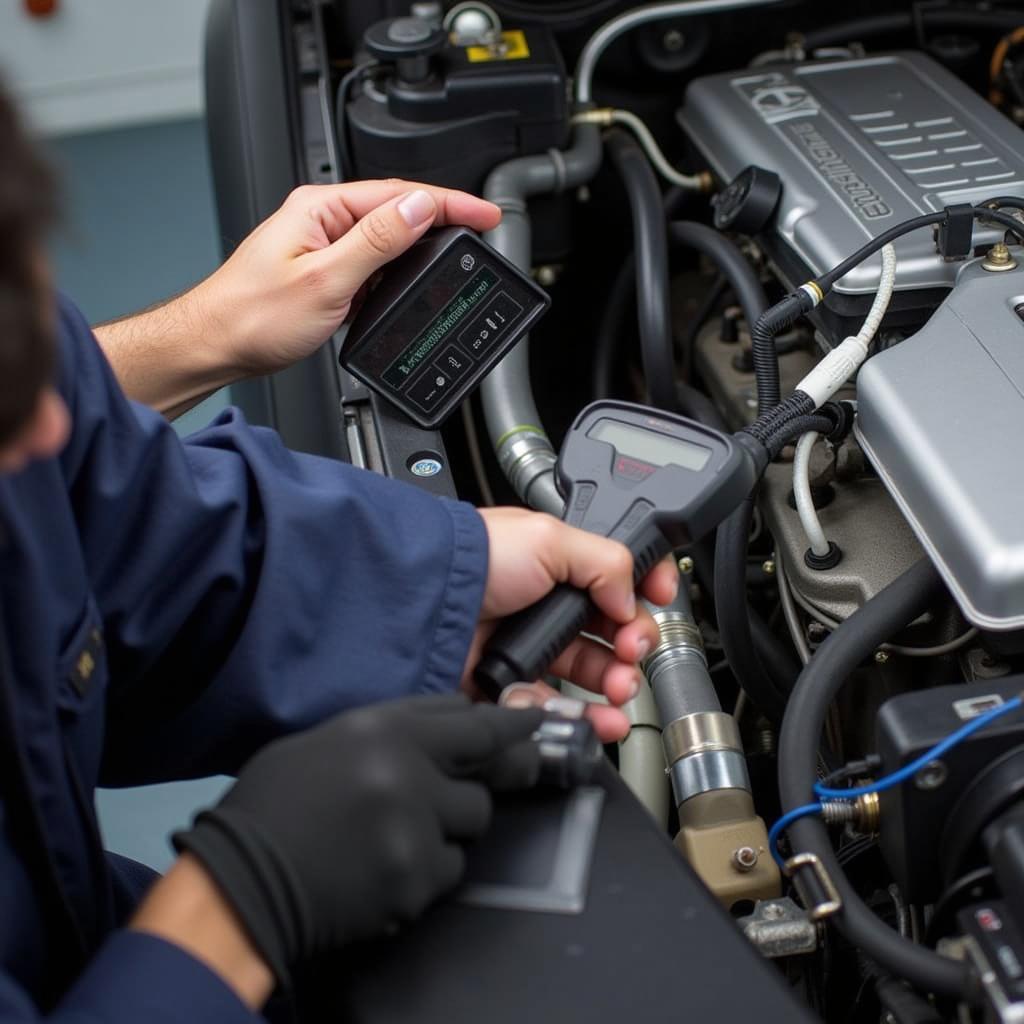The car diagnostic port, often referred to as the OBD-II port, serves as a critical access point for mechanics and car enthusiasts to delve into your vehicle’s computer system. This port allows you to tap into a wealth of information about your car’s health, performance, and any potential issues that need attention. But finding this seemingly elusive port can sometimes feel like searching for a needle in a haystack.
 Common OBD2 Port Locations
Common OBD2 Port Locations
Demystifying the OBD-II Port and Its Location
The OBD-II port is a standardized 16-pin connector, typically black in color, resembling a trapezoid shape. It’s designed to be easily accessible, even for those unfamiliar with car mechanics. While its location can vary slightly depending on the make and model of your vehicle, there are some common hiding spots to investigate:
- Under the Dashboard: This is perhaps the most frequent location for the OBD-II port. Start by looking beneath the steering wheel area, checking both the driver and passenger sides.
- Inside the Center Console: Some manufacturers prefer to tuck the port away inside the center console. Look for a small panel or compartment that might conceal the port.
- Near the Ashtray: Believe it or not, the area around the ashtray or cigarette lighter is another popular spot for the OBD-II port.
- Behind a Trim Panel: In certain vehicles, the port might be hidden behind a removable trim panel, usually near the steering column or on the lower dashboard.
 Connecting an OBD2 Scanner to the Car Diagnostic Port
Connecting an OBD2 Scanner to the Car Diagnostic Port
Troubleshooting: What If You Can’t Locate the Port?
If your search for the OBD-II port proves fruitless, don’t despair! There are a few additional steps you can take:
- Consult Your Owner’s Manual: Your car’s owner’s manual is your best friend when it comes to locating specific components. It will usually have a dedicated section or diagram showing the exact location of the OBD-II port.
- Utilize Online Resources: Numerous websites and forums cater to car enthusiasts. Searching online for your car’s make, model, and year along with “OBD-II port location” can yield helpful results.
Why is Knowing the OBD-II Port Location Important?
Understanding the whereabouts of your car’s diagnostic port can empower you in several ways:
- DIY Diagnostics: Connecting an OBD-II scanner empowers you to read and understand your car’s diagnostic trouble codes, giving you valuable insight into potential problems.
- Cost Savings: Identifying issues early on can potentially save you hefty repair bills down the line.
- Informed Maintenance: Regularly checking your car’s diagnostics can help you stay ahead of maintenance needs and ensure your vehicle is running smoothly.
“Knowing where your OBD-II port is located puts you in the driver’s seat when it comes to understanding your car’s health,” says John Smith, Senior Automotive Technician at DiagFixPro. “It’s a simple step that can make a big difference.”
 Mechanic Using an OBD2 Scanner for Car Diagnostics
Mechanic Using an OBD2 Scanner for Car Diagnostics
Conclusion
Locating your car’s diagnostic port doesn’t have to be a daunting task. Armed with a little knowledge and a bit of exploration, you can easily find this essential access point and unlock a wealth of information about your vehicle’s well-being.
Remember, if you encounter any difficulties or need assistance with car diagnostics, our team of experts at DiagFixPro is always here to help. Contact us via WhatsApp: +1(641)206-8880, or Email: [email protected]. Our customer service team is available 24/7.

Leave a Reply